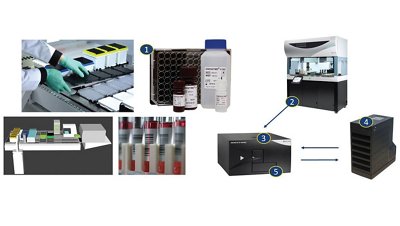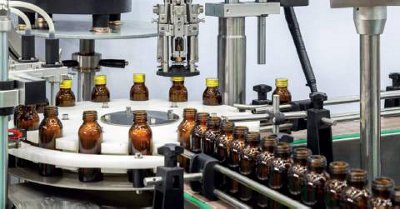State-of-the-art Automation for Endotoxin Testing
The Rising Tide of State-of-the-Art Automation

Originally published in American Pharmaceutical Review
They say “A rising tide lifts all boats” and this is true for advances in automation as applied to various analytical test methods. Have you checked the state of automation capabilities recently? There have been amazing advances in terms of (a) high throughput, (b) error reduction, (c) test organization and (d) value / analyst eff ort. In keeping with the desire of meeting 3R parameters (reduce, reuse, replace the need for using animals) a new solution highlighted from bioMérieux provides advantages that reduce user hands-on-time, cost per test, employs sustainable rFC reagents, and thus eliminates the need of harvesting horseshoe crabs for bleeding.
The word “Robot” is said to be drawn from an old Russian word, robota, for “servitude,” “forced labor” or “drudgery.” In many respects this view holds true, automation does what people do not want to do, however, from another vantage it also does what people are not very good at doing. In performing a task repeatedly (a.k.a. robotically) people tend to become desensitized and somewhat immune to seeing that changes or bad habits have crept into their performance activities. We view this as a “learned” behavior but from a negative vantage it is a learned “shortcut” behavior that may produce a reduction in the quality of the test. In this way robots do not have “feelings”, do not get hungry, or tired, and are not besieged by a slew of co-worker related issues. Robots do not lose their place when pipetting samples into a plate and are not “late” in putting a plate into or removing it from an incubation step.
The Tecan Fluent® workstation has been paired with the bioMérieux ENDOZYME® II GO pre-coated plates to create a seamless automation solution for endotoxin testing.
(a) High Throughput
High throughput is simply the capacity to test a lot of samples in a short time. In endotoxin testing the use of recombinant Factor C reagent provides several unique benefi ts that make the leap in throughput possible. These include the use of an endpoint test where a beginning and end read are all that’s needed to generate results thus opening up the availability of a single reader and system for multiple simultaneous tests. The process is shown in Figure 1.
1. Robotic consumable/reagent/sample/software preparation
2. Robotic addition of samples to plates
3. INITIAL plate reading
4. Incubation at 37°C
5. END plate reading
In the above example each plate has 20 samples and 6 plates have been tested in a total of 60 minutes which is 120 samples (2 samples per minute on average). The 20 minute test using rFC uses the 0.05 EU/mL sensitivity which is typically adequate for purifi ed waters that have a USP limit of 0.25 EU/mL. A more sensitive test (0.005 EU/mL) is also available by incubating each plate for 60 minutes rather than 20 minutes (incubation at 37C). While the plate is not being read, after the initial read, the robot places the plate into the incubator and proceeds with the next beginning plate read.



